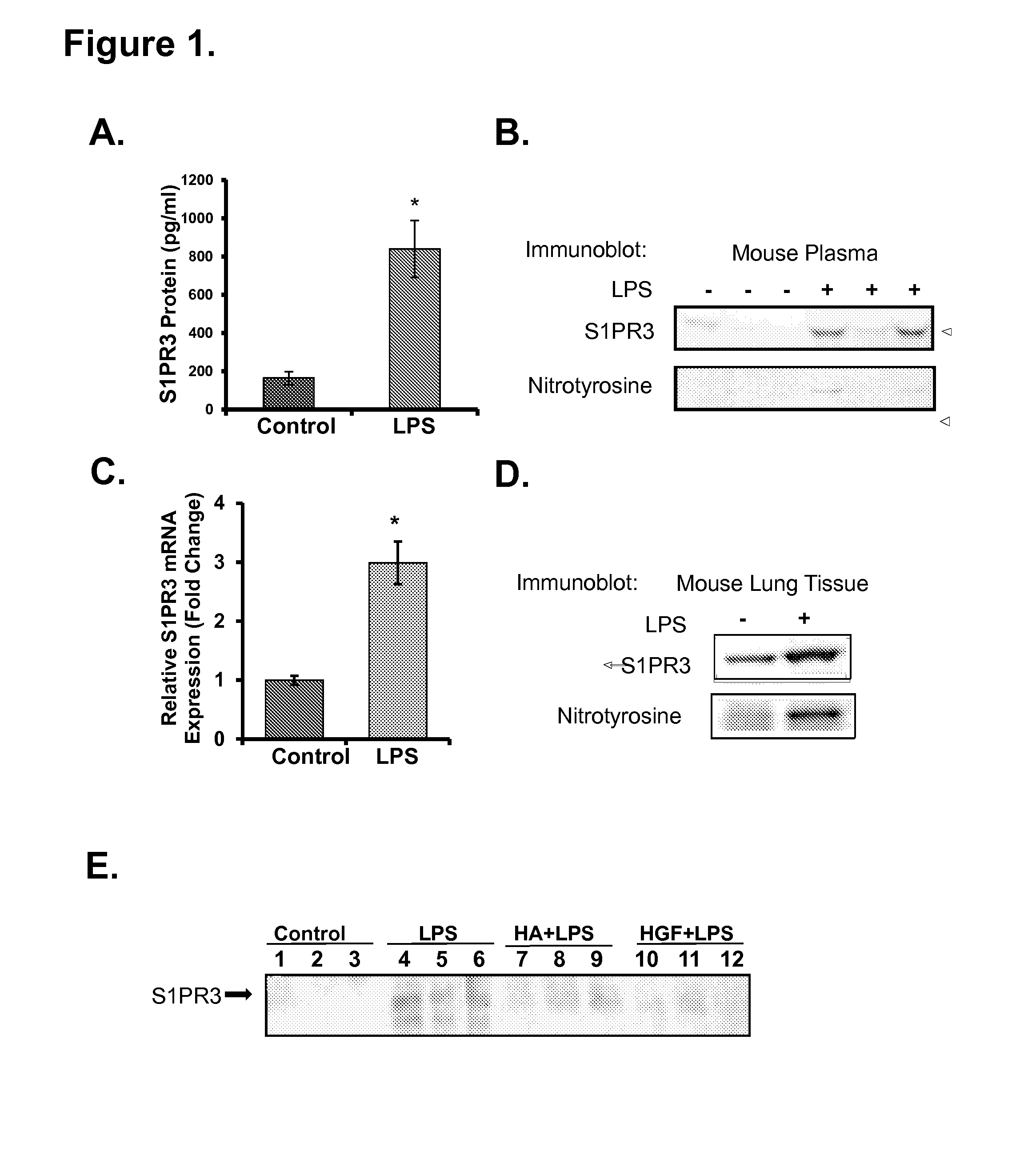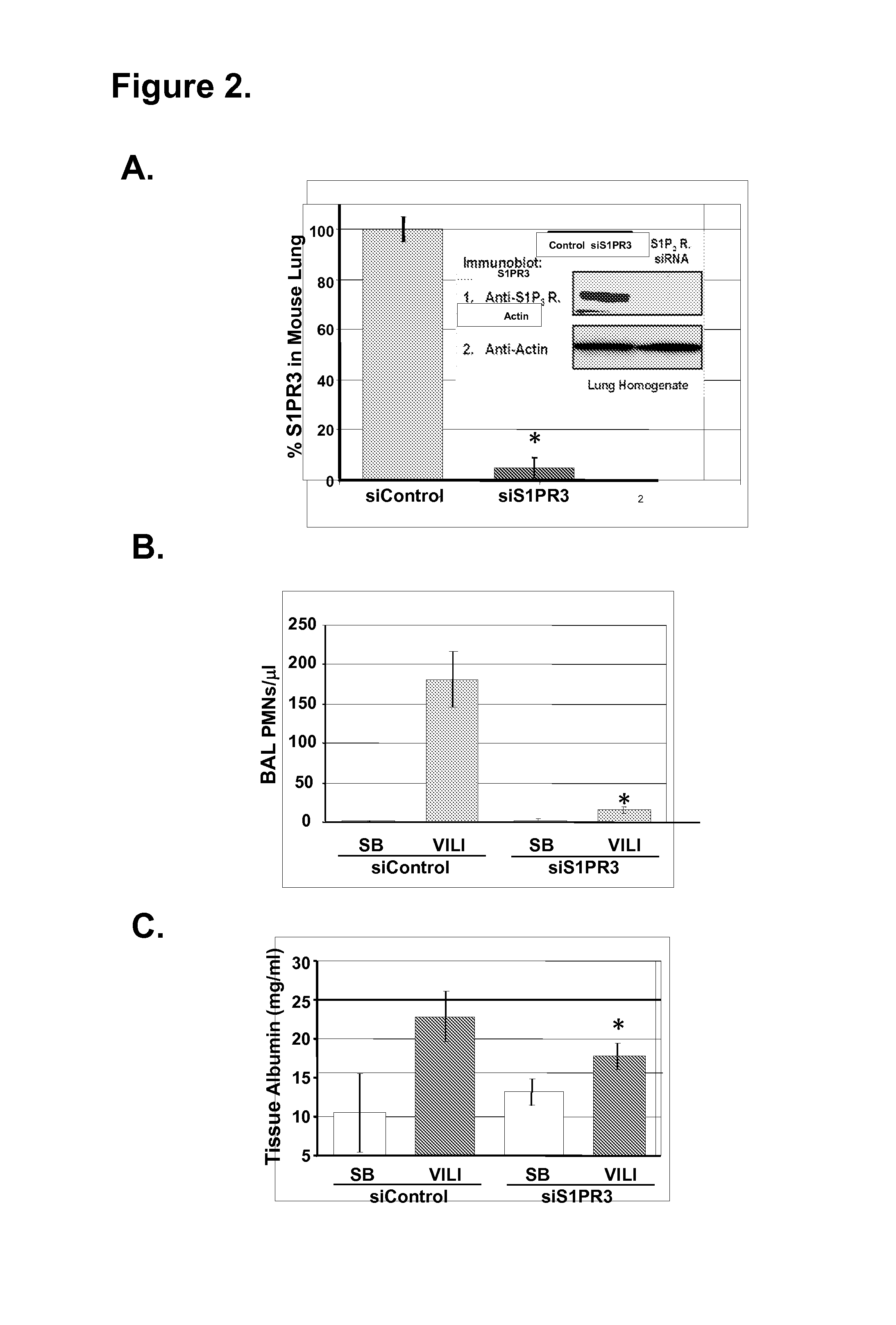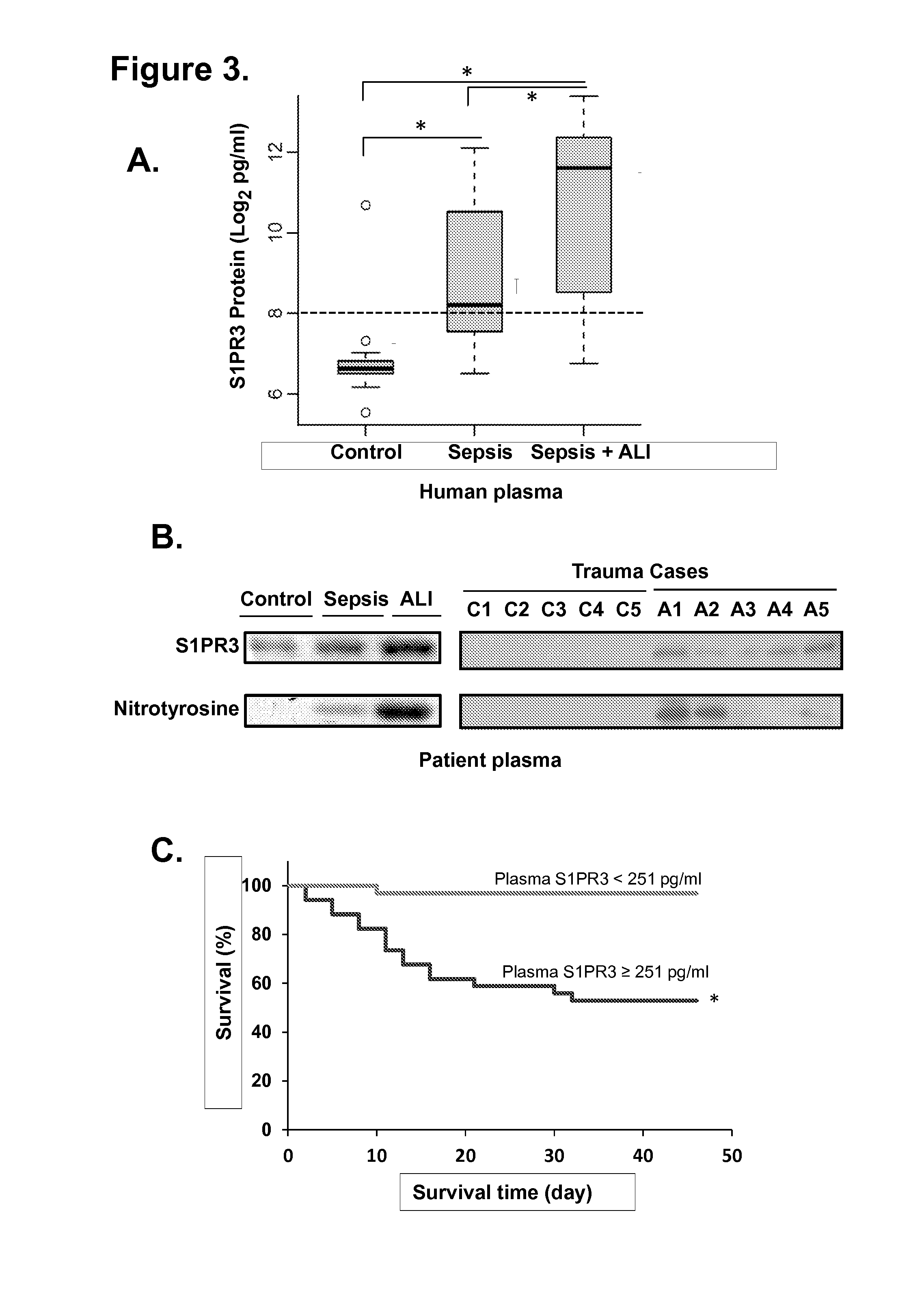Nitrated sphingosine 1-phosphate 3 receptor as a predictor of acute lung injury-associated mortality
a sphingosine and receptor technology, applied in the field of nitrated sphingosine 1phosphate 3 receptor as a predictor of acute lung injury-associated mortality, can solve problems such as increased mortality risk, and achieve the effect of rapid continuous monitoring
- Summary
- Abstract
- Description
- Claims
- Application Information
AI Technical Summary
Benefits of technology
Problems solved by technology
Method used
Image
Examples
example 1
Plasma Nitrated S1PR3 Levels were Increased in Murine Models of ALI
[0047]Global screening of mouse plasma proteins modified by nitration identified the peptide S14SVSDY+45GNYDIIVR27 (SEQ ID NO: 5) with tyrosine residue in position 19 modified by nitration. In silico analysis revealed this peptide to be within the sequence of the S1PR family of receptor proteins. S1PR family proteins were next evaluated as specific targets for nitration in murine models of ALI and in ALI human subjects. Utilizing a well-characterized model of murine ALI induced by 18 hour exposure to intra-tracheal LPS challenge, significantly increased levels of S1PR3 were detected in plasma from LPS-induced ALI mice compared to control mice (5 fold increase, p1C). Increased murine lung gene and protein expression of S1PR3 was also observed as assessed by Affymetrix microarrays and immunoprecipitation from lung homogenates (FIG. 1B, 1D) with increased levels of S1PR3 tyrosine nitration (FIG. 1C, 1D). Interestingly, ...
example 2
Plasma Levels of S1PR3 were Increased in Human Sepsis and ALI and Associated with Increased Mortality Risk
[0048]Sixty-six critical care (ICU) subjects were investigated for plasma S1PR3 protein concentration. Their clinical characteristics are listed in Table 1.
TABLE 1Clinical Characteristics of ParticipantsControlsSepsisSepsis-induced ALIMale91212Female10 1211African-American11 12 8European-American81112Age59 ± 17 61 ± 16 52 ± 19 Apache II Score19 ± 6.628 ± 6.5*26 ± 8.9*Mortality Rate (%)02547*p
[0049]ELISA-detected S1PR3 levels were significantly increased in human plasma from twenty-three patients with sepsis-induced ALI (p251 pg / mL were significantly associated with increased mortality in both sepsis and ALI ICU cases (p<0.01) (FIGS. 3C and 3D).
example 3
Human Endothelial Cells (EC) Released Nitrated S1PR3 Following NO Donor Exposure
[0050]In silico analysis identified 10 potential S1PR3 tyrosine nitration sites including the peptide sequence identified by mass spectroscopy in the original exploratory studies. To confirm that S1PR3 receptor is tyrosine nitrated, Flag-tagged S1PR3 receptor was over-expressed in human pulmonary EC and incubated with the nitrating agent SIN-1, followed by immunoprecipitation with anti-Flag antibodies and detection with anti-nitrotyrosine antibodies. FIG. 4A shows results indicating that over-expressed S1PR3 exhibited basal tyrosine nitration that was substantially increased by SIN-1 challenge, findings consistent with S1PR3 receptor as a target for modification by tyrosine nitration.
PUM
| Property | Measurement | Unit |
|---|---|---|
| concentration | aaaaa | aaaaa |
| concentration | aaaaa | aaaaa |
| concentrations | aaaaa | aaaaa |
Abstract
Description
Claims
Application Information
 Login to View More
Login to View More - R&D
- Intellectual Property
- Life Sciences
- Materials
- Tech Scout
- Unparalleled Data Quality
- Higher Quality Content
- 60% Fewer Hallucinations
Browse by: Latest US Patents, China's latest patents, Technical Efficacy Thesaurus, Application Domain, Technology Topic, Popular Technical Reports.
© 2025 PatSnap. All rights reserved.Legal|Privacy policy|Modern Slavery Act Transparency Statement|Sitemap|About US| Contact US: help@patsnap.com



